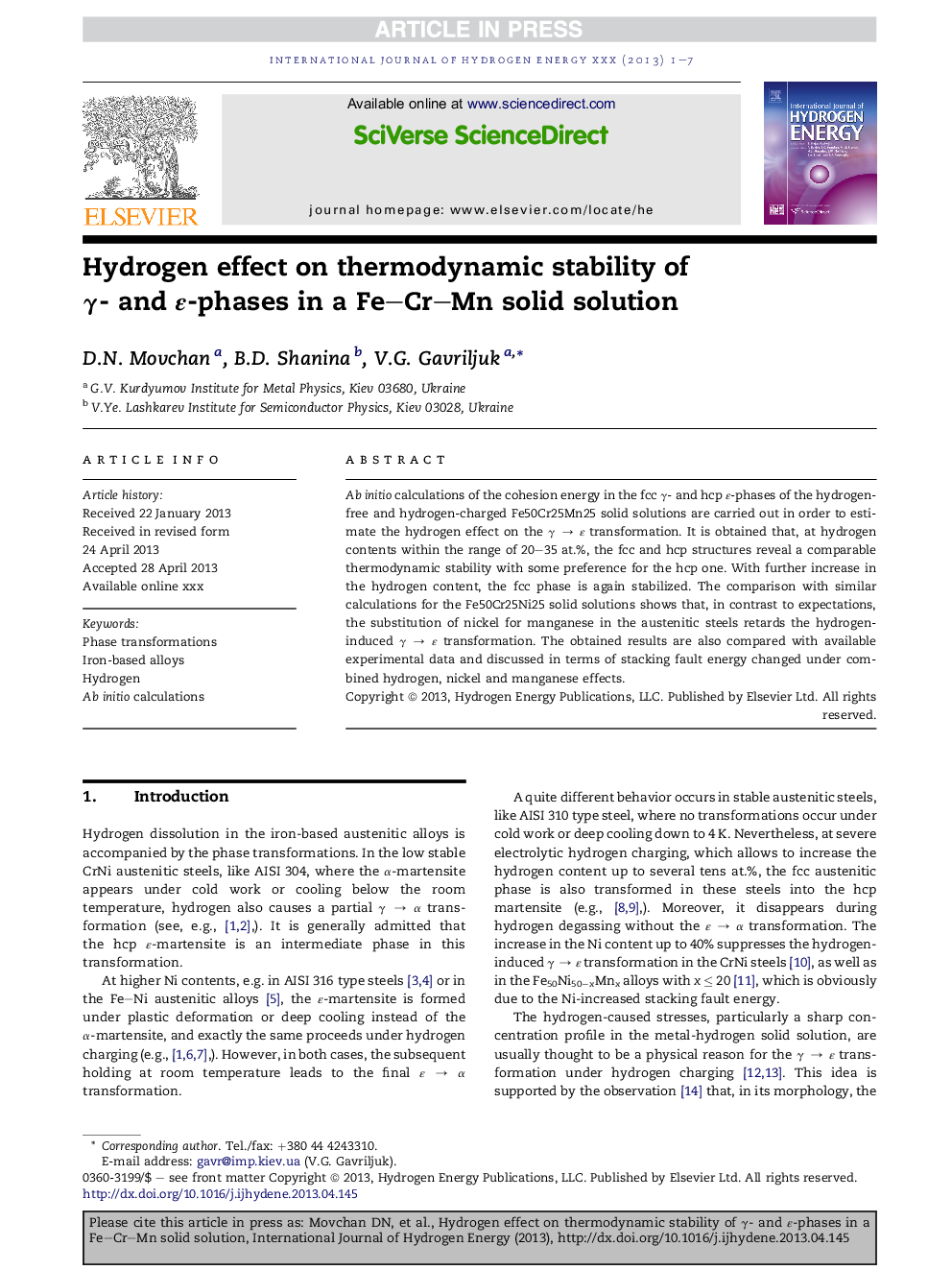| Article ID | Journal | Published Year | Pages | File Type |
|---|---|---|---|---|
| 7722695 | International Journal of Hydrogen Energy | 2013 | 7 Pages |
Abstract
Ab initio calculations of the cohesion energy in the fcc γ- and hcp ε-phases of the hydrogen-free and hydrogen-charged Fe50Cr25Mn25 solid solutions are carried out in order to estimate the hydrogen effect on the γ â ε transformation. It is obtained that, at hydrogen contents within the range of 20-35 at.%, the fcc and hcp structures reveal a comparable thermodynamic stability with some preference for the hcp one. With further increase in the hydrogen content, the fcc phase is again stabilized. The comparison with similar calculations for the Fe50Cr25Ni25 solid solutions shows that, in contrast to expectations, the substitution of nickel for manganese in the austenitic steels retards the hydrogen-induced γ â ε transformation. The obtained results are also compared with available experimental data and discussed in terms of stacking fault energy changed under combined hydrogen, nickel and manganese effects.
Related Topics
Physical Sciences and Engineering
Chemistry
Electrochemistry
Authors
D.N. Movchan, B.D. Shanina, V.G. Gavriljuk,
